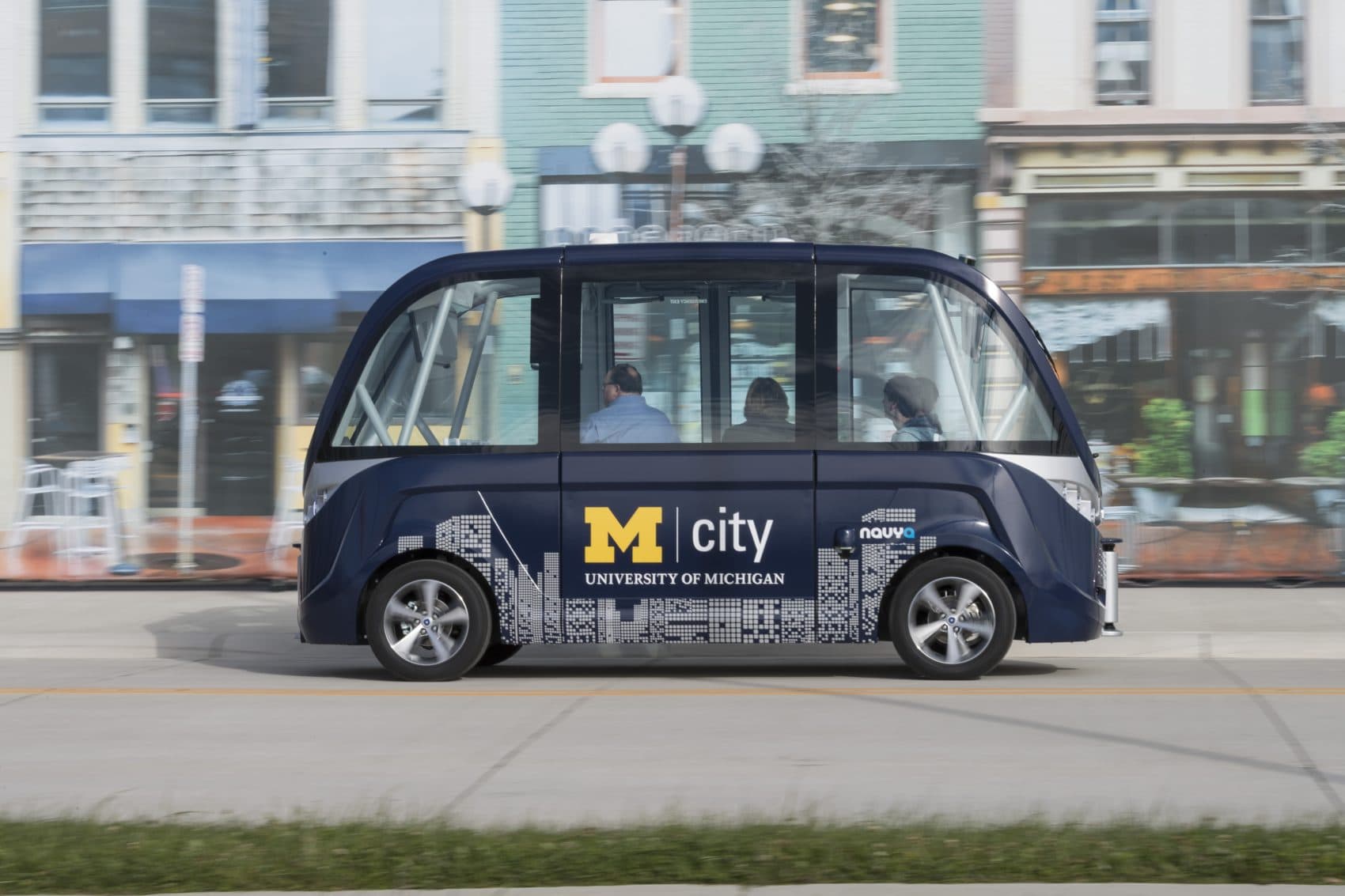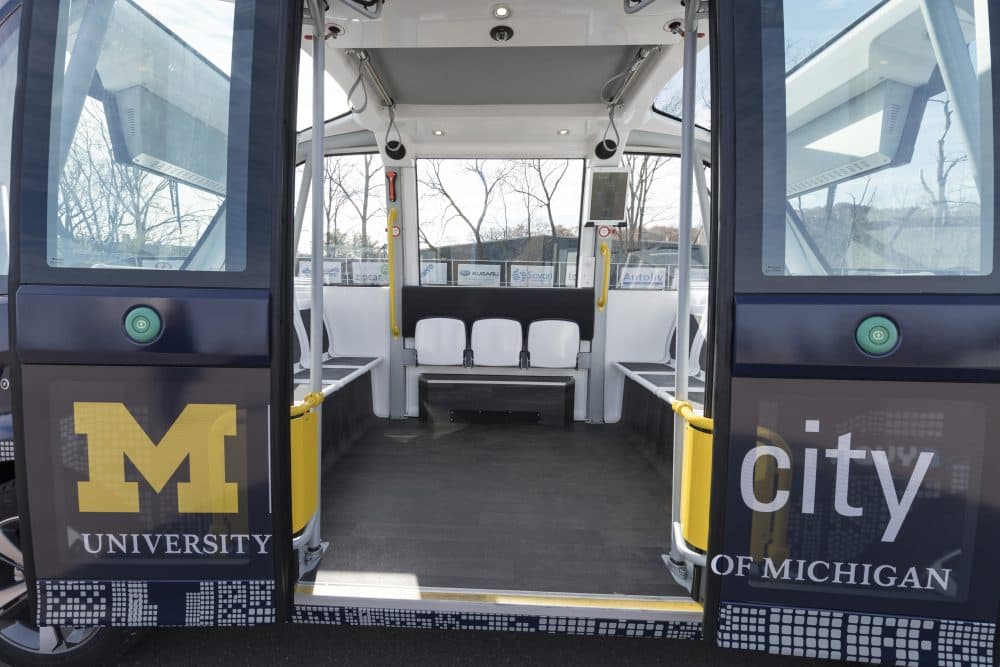Advertisement
University Of Michigan Becomes Country's First Campus To Use Self-Driving Shuttles
Resume
This fall students at the University of Michigan will have a new way of getting around campus. Two self-driving shuttles will cover a nearly two-mile route — a first on any campus around the country.
The project is a partnership with Mcity, a 32-acre testing facility on the campus where tech startups and automakers research self-driving vehicles. Mcity Director Huei Peng joins Here & Now's Robin Young to talk about the shuttle project.
Interview Highlights
On how the shuttles work
"Autonomous vehicles operate largely in two different ways, generally speaking. No. 1 is fixed route: We've mapped the route in advance, driving very slowly, collecting a lot of data. The second type would be free routing. You can literally go anywhere there's a road on the map. So these shuttles largely rely on the GPS, the pre-planned route."
On whether he's concerned about safety
"Absolutely. We understand that some students might be inspired to set the world record in piling into this shuttle, set the U.S. record. Therefore in the beginning, we will have a safety conductor on board. To deploy these shuttles in the community used by real users, including students, it is very important that we take a very cautious approach. So these safety conductors not only will watch and make sure that the vehicle operates safely, they will also watch human behavior and make sure that people come on board using the shuttles safely."

On how the vehicles know when to start and stop
"These vehicles have been programmed to drive safely, to follow the route and to avoid any obstacles, road users. On the other hand, whether these vehicles can safely detect everybody who wants to come on board, or people who want to disembark, therefore the safety conductor as part of this experiment will take that responsibility. In the future, when we have enough confidence that this is operating safely, we will either use sensors or use remote-monitors operators. But during this experiment in the coming year, we will have one safety conductor on board for each shuttle."
On why the shuttles are better than human-driven shuttles
"Robots may not be better than humans in every aspect, but they have beaten the best chess champion. We know that robots always are programmed to learn and improve. They never get distracted, they don't text, they don't get drunk, they don't get angry. So we think that robot drivers eventually will be better than even the best human drivers."
This article was originally published on July 26, 2017.
This segment aired on July 26, 2017.